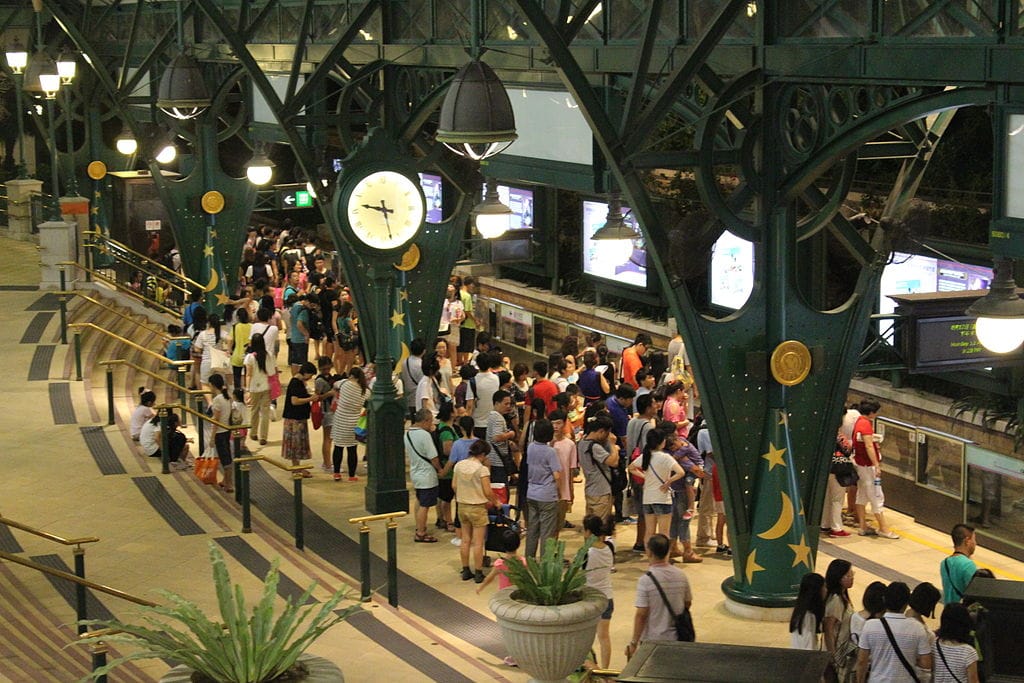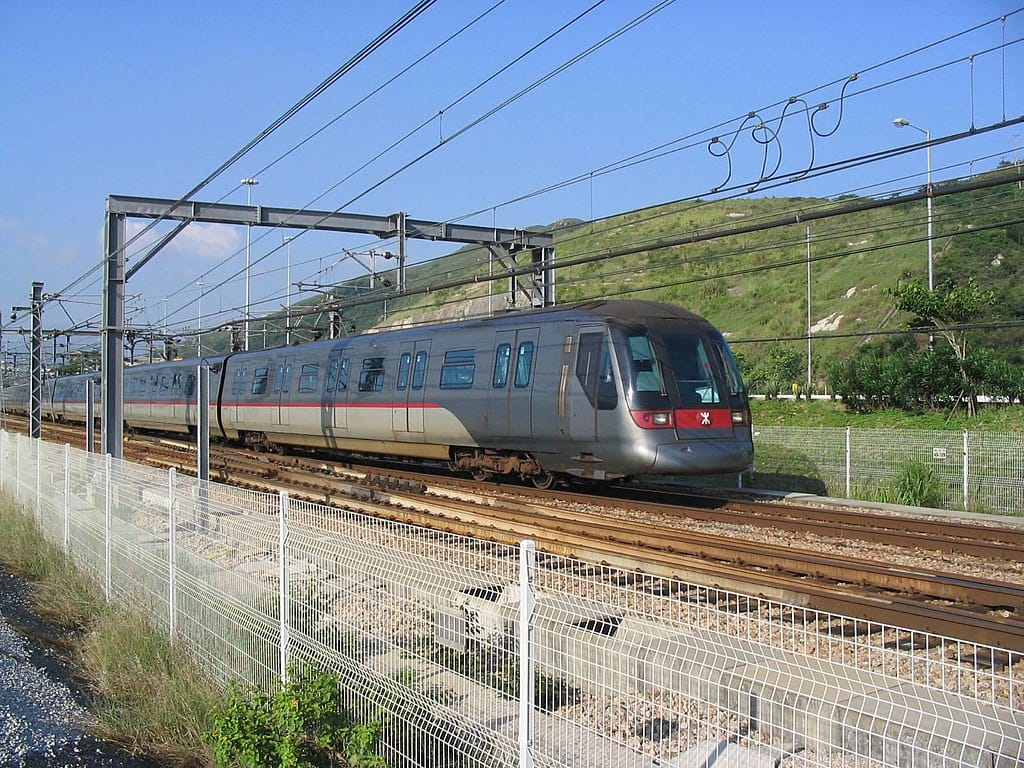Learn more about the history of Hong Kong’s MTR
From it's beginnings to today, the MTR continues to be a primary way for people to experience the vibrant city of Hong Kong.

A few minutes every morning is all you need.
Stay up to date on the world's Headlines and Human Stories. It's fun, it's factual, it's fluff-free.
It's been a little over a century since Hong Kong welcomed its very first passenger train, the Kowloon-Canton Railway, in 1910. And while we've already given you the lowdown on navigating the Mass Transit Railway (MTR) with our quick guide, let's take a deeper dive into its roots. Back in the day, that inaugural train set the stage for what would become one of the world's most efficient transport systems. Fast forward to 1979, and the MTR burst onto the scene, connecting Shek Kip Mei to Kwun Tong and later stretching all the way down to Tsim Sha Tsui. From there, it's been nothing short of legendary, with iconic moments like the opening of the harbor crossing in 1980, which connected Hong Kong Island to Kowloon, to other expansions like the South Island Line in 2016 and the Northern Link, which is set to be completed in 2027.
Initial proposals and planning

During the swinging '60s in Hong Kong, a bustling metropolis was on the rise. With streets packed and roads jammed, it became clear that something had to give. Enter the British transport gurus, armed with plans for a sleek, efficient rapid transit rail system. In 1967, they laid out the blueprint for what would become the backbone of Hong Kong's transportation network, envisioning a sleek, 40-mile marvel weaving through the city's veins.
Fast forward through a rollercoaster of revisions and amendments, and by 1972, the green light was given for the Initial System, a 20-kilometer masterpiece in the making. The stage was set, the players assembled – but as fate would have it, the plot thickened with a sudden twist: a consortium from Japan that had initially won the construction bid bowed out because of financial and logistical challenges, leaving the government in a bit of a pickle. Yet, little did they know, this hiccup was just the beginning of a saga that would shape the future of Hong Kong's iconic MTR.
Construction of the Modified Initial System
Several weeks later, in early 1975, it was out with the old Mass Transit Steering Group, in with the new Mass Transport Provisional Authority, ready to flex some executive muscles. They trimmed down the Initial System, gave it a new name (hello, Modified Initial System), and construction kicked off in November 1975, with the northern section wrapping up by September 1979 and setting the stage for the MTR's big opening. On October 1, 1979, and Governor Murray MacLehose cut the ribbon to open Phase 1 of the MTR's grand rollout, which connected Shek Kip Mei to Kwun Tong. Phase 2 extended the tracks to Tsim Sha Tsui, then onto Chater (now known as Central station) in the final leg. And on February 12, 1980, Princess Alexandra herself rode the inaugural train, gliding beneath Victoria Harbour to Central station.
Expanding horizons
When the government gave the thumbs-up for the Tsuen Wan line extension back in 1977, construction kicked off immediately in 1978. In 1982, the Tsuen Wan line was born, adding 10.5 kilometers of subway from Prince Edward to Tsuen Wan. But this wasn't just a simple extension. A lot of the stations were renamed – So Uk became Cheung Sha Wan, Cheung Sha Wan became Lai Chi Kok and Lai Chi Kok became Lai Wan and was later renamed Mei Foo. And let's not overlook the Island line, given the thumbs-up in 1980 and fully operational by 1985. Spanning from Admiralty to Chai Wan, this line became a go-to route, with Admiralty and Central stations becoming bustling transfer hubs.
Meanwhile, in 1984, the government paved the way for the Eastern Harbour Crossing – a tunnel designed for both cars and MTR trains. By 1989, the Kwun Tong line had stretched its reach all the way to Quarry Bay, creating an important interchange with the Island line at Quarry Bay station. And let's not forget about Lam Tin, a new station that opened in 1989, adding another important stop on the Kwun Tong line for the growing residential areas of East Kowloon.
Partial privatization and merger
On October 5, 2000, the Mass Transit Railway Corporation (MTRC) shook things up by becoming the city's first partially privatized rail company, marking the start of a government initiative to ease its grip on public utilities and make things more efficient. Before its grand debut on the Hong Kong Stock Exchange, the MTRC was a government-owned entity. But with about one billion shares up for grabs in its initial public offering (IPO), it quickly became the talk of the town. It now boasts the largest shareholder base of any listed company in Hong Kong, showing just how confident Hong Kongers are about the MTR's operations and future.
In 2007, the MTR Corporation Limited (MTRCL) proposed a merger with the Kowloon-Canton Railway Corporation (KCRC), despite facing opposition. Surprisingly, the proposal won approval from minority shareholders on October 9, 2007, clearing the path for MTRCL to take charge of the KCRC network. By December 2, 2007, the deal was sealed, and the integration of fare systems across both networks made commuting a breeze. Fare zones were unified across urban lines, East Rail line, Ma On Shan line and West Rail line, simplifying travel with just one ticket. And to sweeten the deal, students enjoyed discounts on their Octopus Cards.
Recent expansions and innovations today
Today, the MTR has become a sprawling network, constantly expanding to keep pace with Hong Kong's ever-growing urban landscape. From the LOHAS Park Spur Line, which serves the vibrant residential community of LOHAS Park, to the West Island line, connecting the Western District of Hong Kong Island, the MTR system has evolved into a lifeline for commuters and residents alike. With extensions like the Kwun Tong line extension and the South Island line, the MTR now links all 18 districts of Hong Kong, seamlessly connecting the city like never before. The Tuen Ma line opened in 2021, bringing together the former Ma On Shan line and the West Rail Line, offering even more convenient travel options. With each new extension and upgrade, the MTR continues to be a top way for people to move around and experience the vibrant city of Hong Kong.




Comments ()